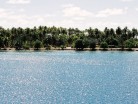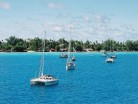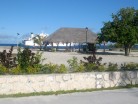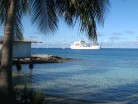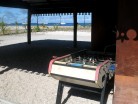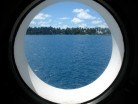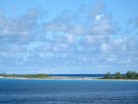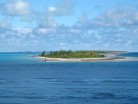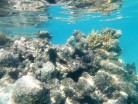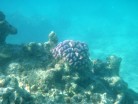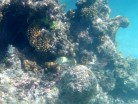Fakarava, Havaiki-te-araro, Havai’i or Farea is an atoll in the west of the Tuamotu group in French Polynesia. It is the second largest of the Tuamotu atolls. The nearest land is Toau Atoll, which lies 14 km to the northwest.
The shape of Fakarava Atoll is roughly rectangular and its length is 60 km and its width 21 km. Fakarava has a wide and deep lagoon with a surface of 1,112 km² and two passes. The main pass to enter the lagoon, located in its northeastern end, is known as Passe Garuae and it is the largest pass in French Polynesia; the southern pass is called Tumakohua.
The first recorded European to arrive to Fakarava Atoll was Russian oceanic explorer Fabian Gottlieb von Bellingshausen on July 17, 1820 on ships Vostok and Mirni. He named this atoll “Wittgenstein”.
Fakarava’s inhabitants were evangelized by Belgian Jesuit priest Honoré Laval in 1849. The church at Rotoava was dedicated in 1850.
There is a territorial (domestic) airfield in Fakarava which was inaugurated in 1995.
Fakarava is presently being classified by UNESCO as a biosphere reserve.
Fakarava has 701 inhabitants; the main village is called Rotoava.
